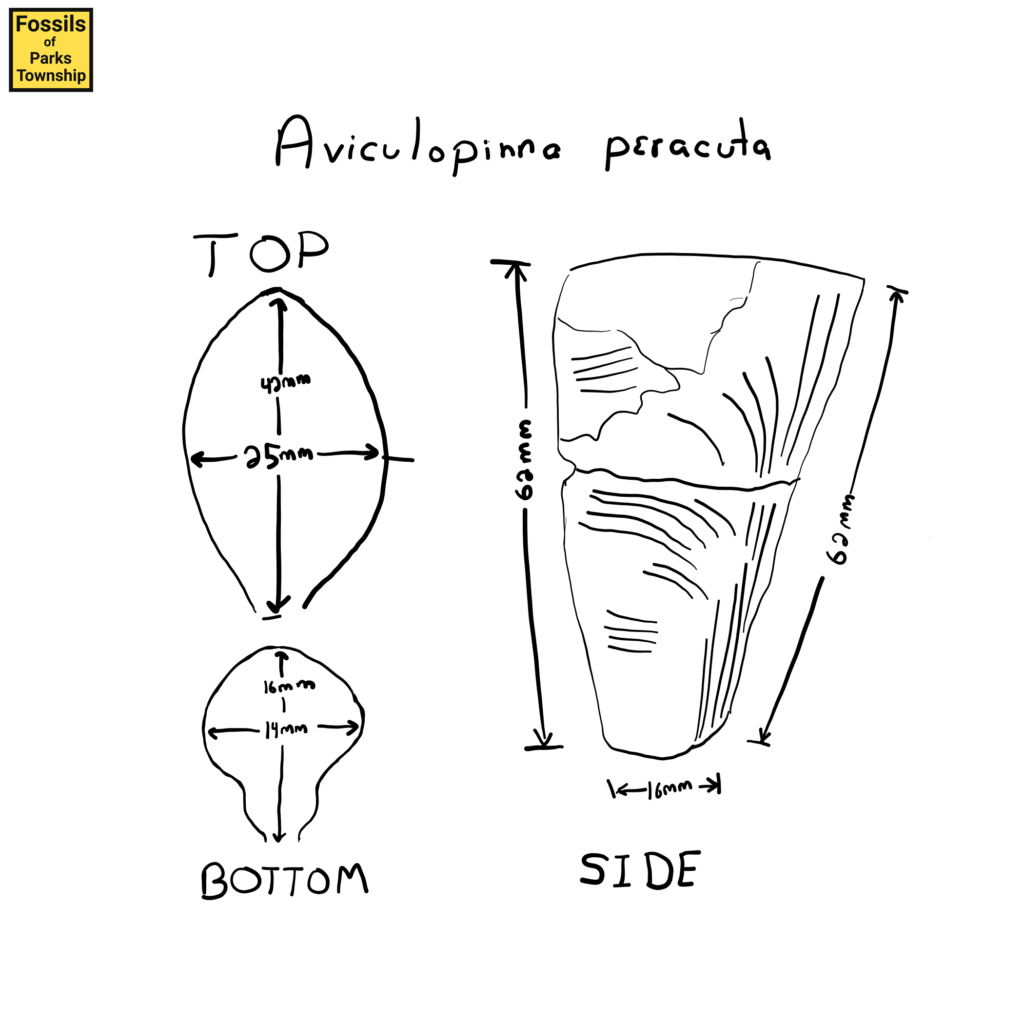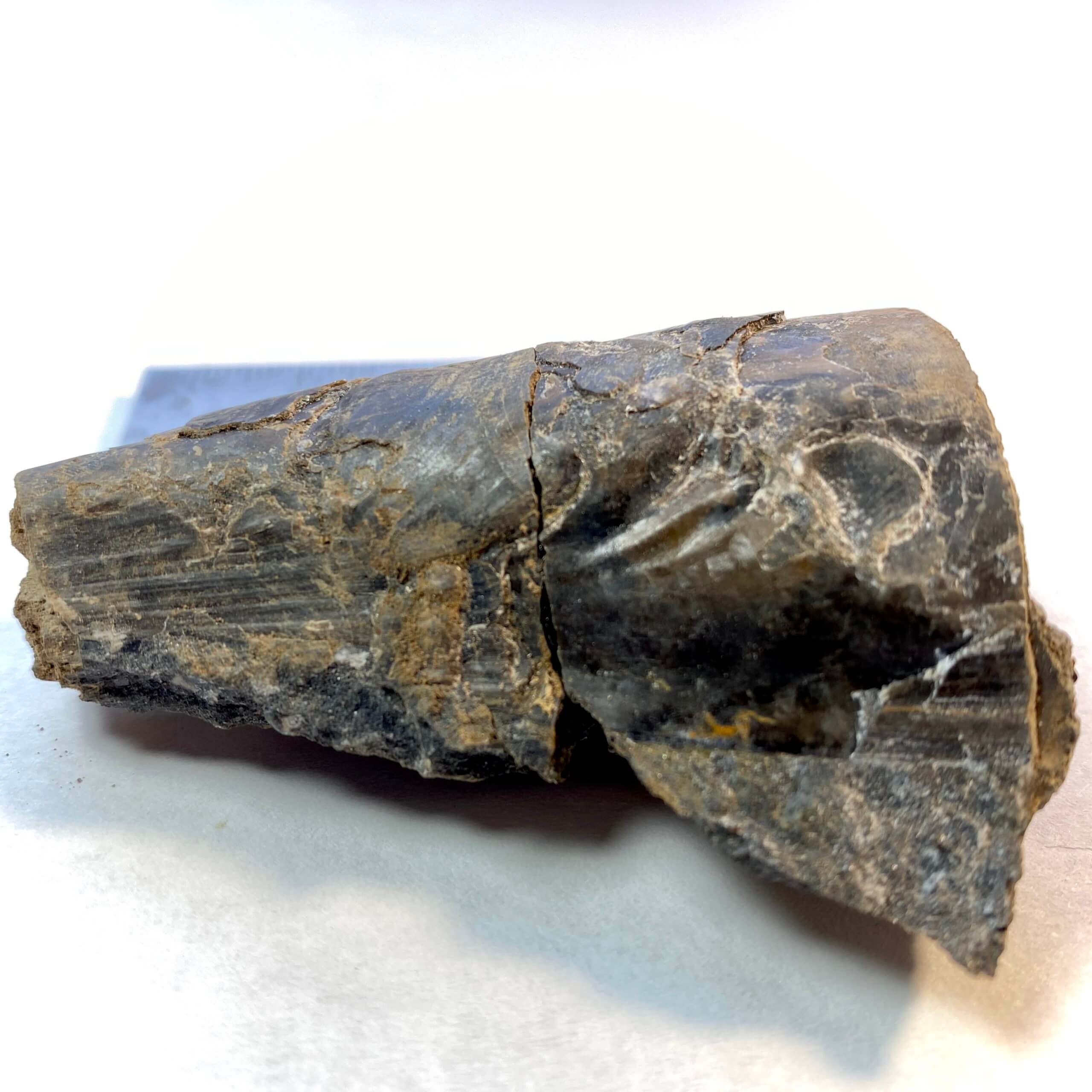Catalog Number: CG-0032
I’m not certain on the genus and species. I’ve considered Meekopinna Americana and Aviculopinna peracuta as possibilities. However, upon reading an article from the Journal of Paleontology, the entire family is in need of some clarification.
We understand, however, that the Paleozoic Pinnidae are in need of a complete re-investigation; hence we only cautiously designate the material described here under Meekopinna and Aviculopinna.
L. E. Anelli, A. C. Rocha-Campos, M. G. Simoes; Pennsylvanian Pteriomorphian bivalves from the Piaui Formation, Parnaiba Basin, Brazil, JOURNAL OF PALEONTOLOGY, V. 80, NO. 6, 2006
From the size of the cross section in this specimen, I will have to go with Aviculopinna peracuta for now. Its a very wide oval in size in cross section. It comes from my local limestone and is approximately 305 million years in age. Sea pens are an easy find locally. They often are the point of where limestone will shear when struck. On the surface they appear as distinct pointed ovals, and are typically standing up, with the smaller point directly towards the ground. The shell material will often stick to the rock it came from, leaving the distinct grooves back from where it came.

Specimen is about 60mm in length. It was broken in half, I glued it back together using Paraloid B-72 




Top 
Fossil Prismatic Layer
I’ve done an entire posting relating to prismatic layer in Sea Pens. This one shows the layer well. It appears as tall spines of material aligned towards the surface. These photos show it.
Specimen Dimensions

More Sea Pen Finds from Parks Township
- Our first, Sea Pen No 1
- Sea Pen No 2
- Sea Pen No 3






